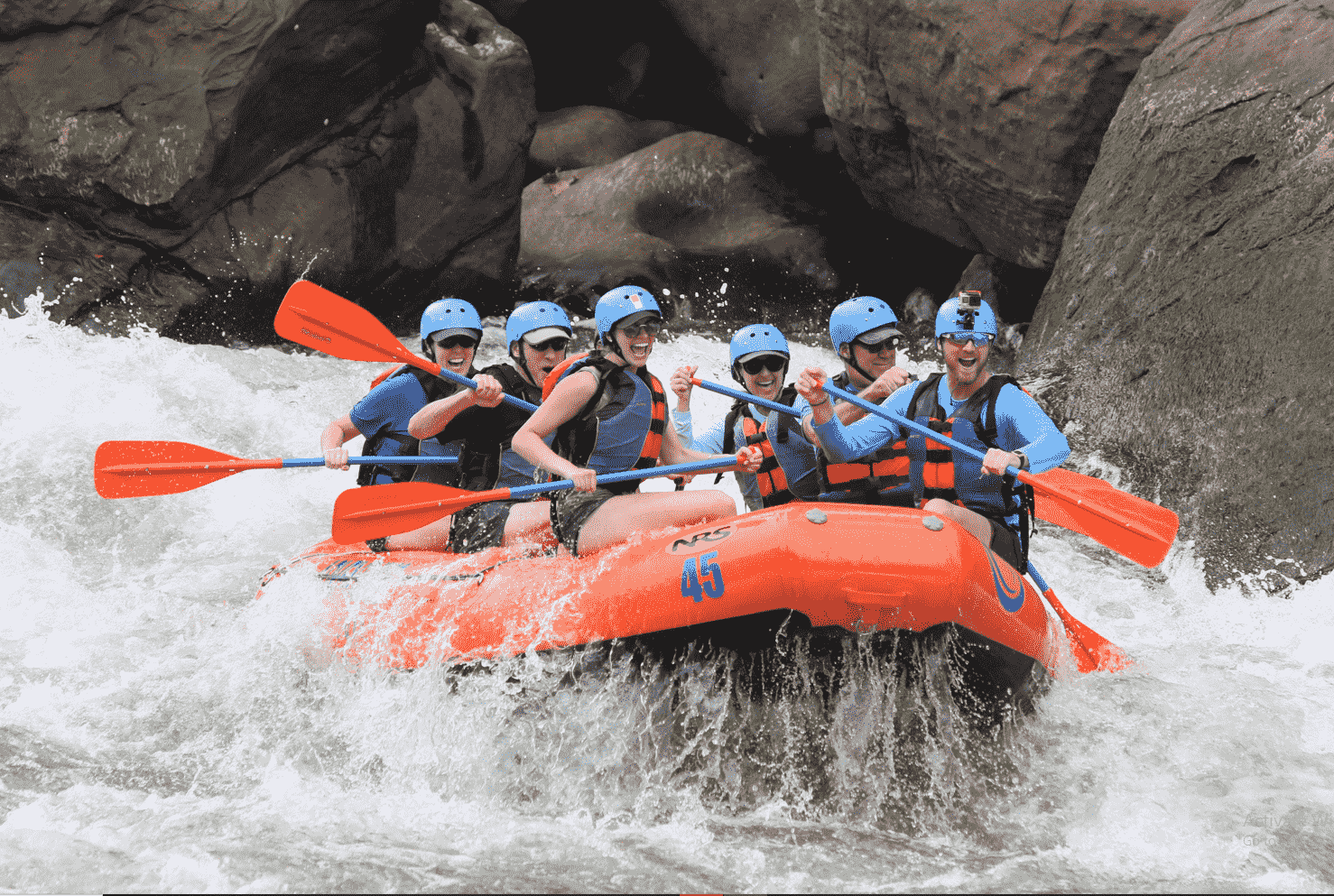
Introduction : Sports rafting, also known as white-water rafting, is an adrenaline-pumping outdoor activity that combines teamwork, adventure, and the thrill of navigating untamed rivers. As the sun glistens on the water’s surface and the sound of rushing rapids fills the air, rafting enthusiasts from around the world gather to experience the excitement of this dynamic water sport. In this 1200-word exploration, we will dive deep into the world of sports rafting, uncovering the history, types of rafting, equipment, safety measures, and the heart-pounding experiences that make this adventure a favorite among thrill-seekers.
I. The History of Sports Rafting : Sports rafting has a fascinating history that dates back centuries. While it was initially a means of transportation, rafting evolved into a recreational activity in the mid-20th century. It gained popularity in the United States in the 1960s, thanks to the pioneering efforts of early adventurers who explored previously uncharted white-water rivers.
II. Types of Sports Rafting :
-
Class I and II Rafting: Ideal for beginners and families, these gentle rapids offer a relaxed introduction to the sport. The focus is on enjoying the scenery and a milder rafting experience.
-
Class III Rafting: Moderate white-water with exciting rapids and an increased level of difficulty. This category is suitable for those with some prior rafting experience.
-
Class IV and V Rafting: For the daredevils and adrenaline junkies, these levels present formidable challenges with intense rapids, requiring strong teamwork and rafting skills.
-
Extreme Rafting: Reserved for seasoned professionals, this category includes descents on uncharted, dangerous rivers, often at the mercy of Mother Nature’s raw power.
III. Equipment and Gear : To tackle the exhilarating world of sports rafting, one must be equipped with essential gear, including a sturdy raft, paddles, helmets, life vests, wetsuits, and safety equipment. Rafts come in various shapes and sizes, designed to handle different river conditions. Helmets and life vests are non-negotiable for safety, as they protect against collisions and ensure buoyancy.
Discover the thrilling world of sports Canoe polo and Canoe marathon– from latest updates and events to expert insights. Stay ahead in the game.
IV. Safety Measures : Safety is paramount in sports rafting, as it involves unpredictable natural elements. Guides, often seasoned experts, provide instructions and briefings before each trip. Participants must listen carefully and follow the guide’s directions. In addition, groups should have proper training and adhere to safety protocols. It’s also vital to be aware of weather conditions and potential hazards on the river, ensuring everyone’s well-being.
V. Popular Rafting Destinations : Sports rafting has taken off in various parts of the world, each offering unique river experiences. The Grand Canyon in the United States, the Zambezi River in Africa, and the Futaleufú River in Chile are just a few examples of world-renowned rafting destinations. These locations are celebrated for their breathtaking landscapes, challenging rapids, and the opportunity to witness wildlife in their natural habitats.
VI. The Rafting Experience : Once geared up and briefed, rafters embark on an unforgettable journey. The sensation of gliding down the river’s surface while navigating rapids and taking in the stunning surroundings is unlike any other. The teamwork required to conquer challenging stretches fosters camaraderie among participants, creating bonds that often last a lifetime. The thrill of conquering tumultuous waters, the rush of adrenalin, and the satisfaction of successfully completing a white-water journey are what make sports rafting an addictively appealing adventure.
VII. Environmental Considerations : With the increasing popularity of sports rafting, there is a growing emphasis on environmental awareness and conservation. Rafting operators and enthusiasts recognize the importance of preserving the natural beauty and ecological balance of the rivers they explore. Responsible rafting practices include leaving no trace, reducing waste, and supporting local conservation efforts.
VIII. A Rafting Journey: Personal Stories : To truly appreciate the magic of sports rafting, one needs to hear the personal stories of those who have experienced it firsthand. Stories of conquering monstrous rapids, forming deep bonds with fellow adventurers, and discovering hidden gems along the riverbanks are the heart of the rafting community. These stories serve as testament to the exhilaration and transformative power of this sport.
IX. The Future of Sports Rafting : As the popularity of sports rafting continues to grow, the future of the sport looks promising. Advancements in equipment, safety measures, and accessibility will likely make rafting an even more accessible and thrilling activity for people of all ages. Furthermore, the sport’s commitment to environmental conservation and responsible practices will ensure that these pristine rivers and their ecosystems are preserved for future generations of rafting enthusiasts.
Conclusion : Sports rafting is more than just a recreational activity; it’s a journey of self-discovery, adventure, and an intimate connection with nature. With a rich history, diverse types of rafting, strict safety measures, and a strong commitment to environmental conservation, the world of sports rafting continues to evolve and captivate the hearts of adventurers. Whether you’re a beginner or an experienced rafter, the rush of white-water rapids and the camaraderie formed with fellow rafters will keep you coming back for more, making sports rafting an experience like no other in the realm of outdoor sports.




